QuestionQUESTION: Hello,
I recently invested in a fish tank and started off with three tetras and two dalmatian Mollies. About a week after I got my tank everything was great, the fish were happy the water was balanced, everything was normal. So I got an albino Plecco and a smaller angel fish. The smaller mollie, who I assume is the male since the other seems to be pregnant, has been very aggressive. The Plecco is fine, he just keeps to himself sucking on the walls of the tank. Although, the Mollie kept nipping at the Angel fish and then stopped when I would sit in front of the tank. When I went to class and came back a few hours later the Angel fish was deceased. Are Angel fish and Mollies not meant to be together? Or is there maybe a way to make the Mollies not so aggressive toward other fish? This really upset me. Also, should I separate the male Mollie since the female is pregnant?
ANSWER: Hello Elizabeth,
Mollies are known for a bit of aggression. Males sometimes chase females endlessly, and can be defensive with tankmates, but, they are usually only aggressive toward tankmates when they are overcrowded.
Remember, if the fish will mature to one inch, then it can have a gallon, but for fish who mature to two inches, it's two gallons per fish.
For instance:
2 mollies will require 3 gallons of aquarium each. They are going to mature to around 3".
1 Plecostamous will require at least 50 gallons. Mine got about 18" long when mature, but as youngsters they are okay in 20 gallons.
1 Angelfish will mature to around 10" from top to bottom. This means it must have 10 gallons, but with angelfish other things come into play. They require extensively good water conditions and specific PH. Therefore I recommend 25 gallons per Angelfish. As a youngster, a 20 gallon might be okay for a pair.
So, when choosing fish, please keep in mind their requirements as adults. The general rule of thumb is 1 gallon per inch of fish to 1.5 gallons. So if the fish is one inch long, he gets 1.5 gallons to himself. If he's 2 inches long, he gets 3 gallons to himself. If you have a 10 gallon tank and you have 5 fish in the tank, they should be very small fish. :)
This could be a part of your issue. Is the tank crowded? Is the water crystal clear and in good shape? I realize as a new fish keeper you probably don't have an aquarium test kit. So, take some water out an put it into a white bowl and if the water isn't crystal clear, then you have water issues. Any yellowing can mean high nitrates/nitrites/ammonia.
This means there is poop in the water and the fish are breathing it, which may be why the fish died. The angelfish probably was not killed by the molly, but was chased, causing stress. Stress causes excessive breathing, but if there's dirty water, they can't breathe. Hence, they die.
You don't have to separate the mollies. Just add some plants for fry to swim in. Make sure you remember that Mollies aren't freshwater fish. Even though petstores sell them as freshwater fish, they are not. They usually live very short lives in freshwater. Mine are full marine and swim in my reef aquarium. All my fry were born in full saltwater reefs.
At least one quarter cup of marine salt per gallon is required for mollies. Maybe down the line you can consider adding some salt for their health?
They will survive in freshwater, but they tend to die from illness and parasites easier in fresh. Their natural immunity isn't for freshwater and they can't fight some of the things in it.
They are found wild in Florida. They are found along the coastal waters, in reefs swimming in the tides and tidepools, but they are also found amongst the Mangrove Tree roots in brackish water. Nearby or up the stream may be some freshwater and you can find some exploring there, but their favorite water, which is what is best for them, is full brackish.
So, in answer to your question about whether angelfish and mollies should be together, technically, they aren't even from the same water specifications. The PH which Mollies survive at is also much different from that which angelfish survive.
It would be a good idea to have your PH tested as well. Angelfish require specific PH, ranging from 6.5 to 7.0.
I truly hope this helps. Unfortunately, the molly will be aggressive if he's crowded, but he will also be aggressive toward the female. They tend to chase things. It's a molly's nature.
I truly hope this helps and if you have any followup questions please feel free to ask them.
I'm so sorry you've had to wake up to a dead fish. It's really hard. We become so attached to them and then to find our little buddies gone is hard.
You will get the hang of it. From now on, look at the labels and read up on fish before purchasing. The internet is a valuable tool. :)
Good luck and happy fish-keeping.
Renee
---------- FOLLOW-UP ----------
QUESTION: The tank is the right size for them and I have plants they really seem to enjoy. The water is actually quite clear but I noticed the wing of the angel fish turned red which I though could have been blood from being nipped at so much? It originally had no red, was only yellow and brown. It is crazy that Mollies are salt water fish! I had no idea and have had them (with angel fish) since I was little, just never on my own. Maybe I will just have to invest in a full on saltwater tank. Again, thank you so much for your help.
Elizabeth
AnswerHi Elizabeth,
A red fin is usually not a sign of aggression, and usually it's more related to chloramine poisoning, chlorine poisoning or to ammonia/nitrate poisoning. Check your filtration...make sure it's up to par. :)
Otherwise, remember that in the old days we could take our tap water and store it for a few days, and all the chlorine would dissipate, but nowdays in most countries, even well water is treated with either the dual-treatment of chlorine/chloramine or with the single treatment of chloramine. Chloramine takes about five days to murder a fish. It's not really easy to detect, so when we use a dechlorinating proudct, it's best to use one that treats for both chemicals.
Signs to watch for if this is a potential issue are breathing at the top of the tank, red fins and sometimes the fish shows no signs, but will remove himself from his school and will single himself out while he struggles.
It probably was aggression in your case, but I like to cover all the bases.
Thankyou for the ratings. I hope you feel free to email anytime you need to and certainly, that the advice helps.:)
Thanks again,
Renee

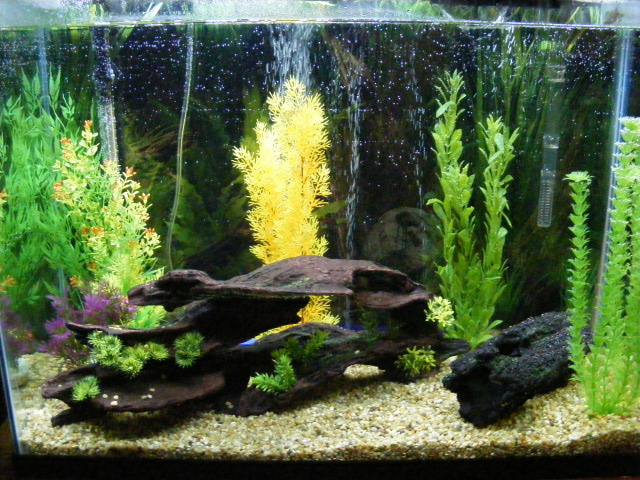 bubbles
Question
bubbles bubbles 2
Hello Richard,
bubbles
Question
bubbles bubbles 2
Hello Richard,
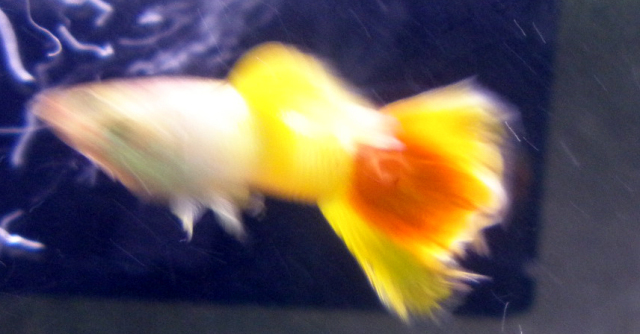 tail growth
QuestionQUESTION: I have had a male guppy for several m
tail growth
QuestionQUESTION: I have had a male guppy for several m
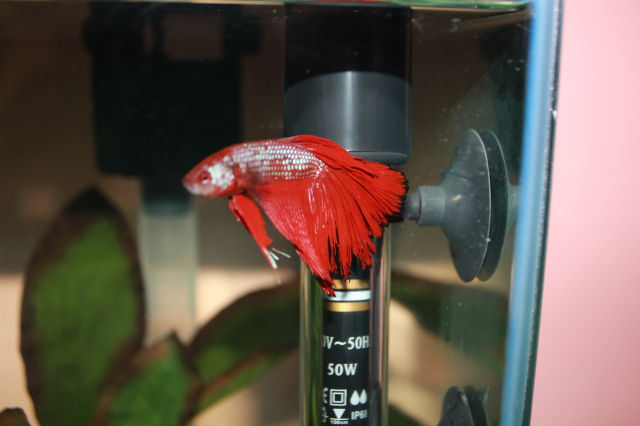 Betta fin problem?
Question
Fins
Hi Jaymie,
I contacted you a few
Betta fin problem?
Question
Fins
Hi Jaymie,
I contacted you a few
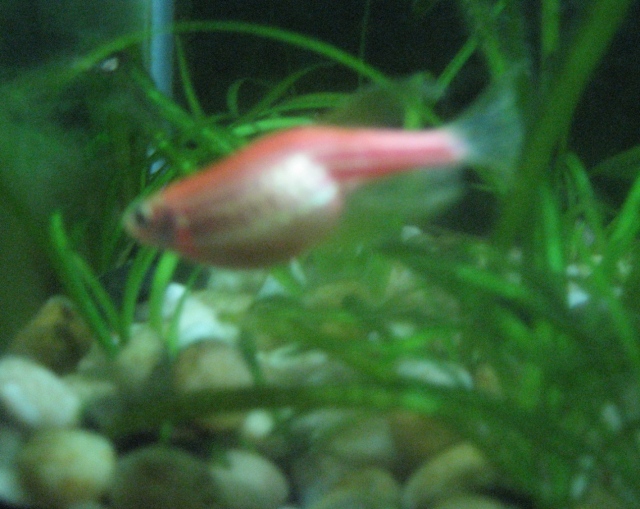 Red Danio with a large belly
Question
Red Danio with a large
Hi there,
My fis
Red Danio with a large belly
Question
Red Danio with a large
Hi there,
My fis
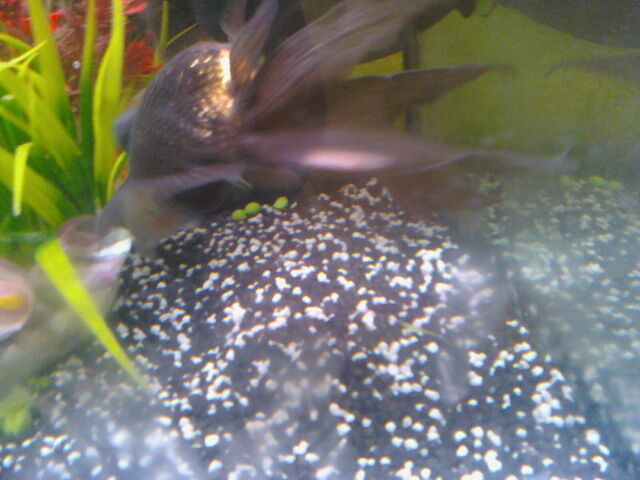 RE: Sick blackmoor
Question
Blackie
Hi,
I just want some advice on a blac
RE: Sick blackmoor
Question
Blackie
Hi,
I just want some advice on a blac